An Amish Friendship Sourdough Starter is a sweet, fermented mixture of sourdough starter, flour, sugar, and milk inspired by the traditional Amish Friendship Starter that has been passed down for generations. It serves as the base for creating a variety of baked goods, including breads, cakes, muffins, and pancakes, all with a rich, sweet flavor.
Unlike traditional sourdough starters, this version incorporates sugar and milk, giving it a softer, sweeter profile that works beautifully in sweet recipes. True to its name, the starter is designed to be shared—after feeding and growing, portions can be passed along to friends and family, spreading the joy of baking and community. Whether you’re crafting classic cinnamon rolls or experimenting with your own creations, this starter brings a touch of tradition and creativity to your kitchen.
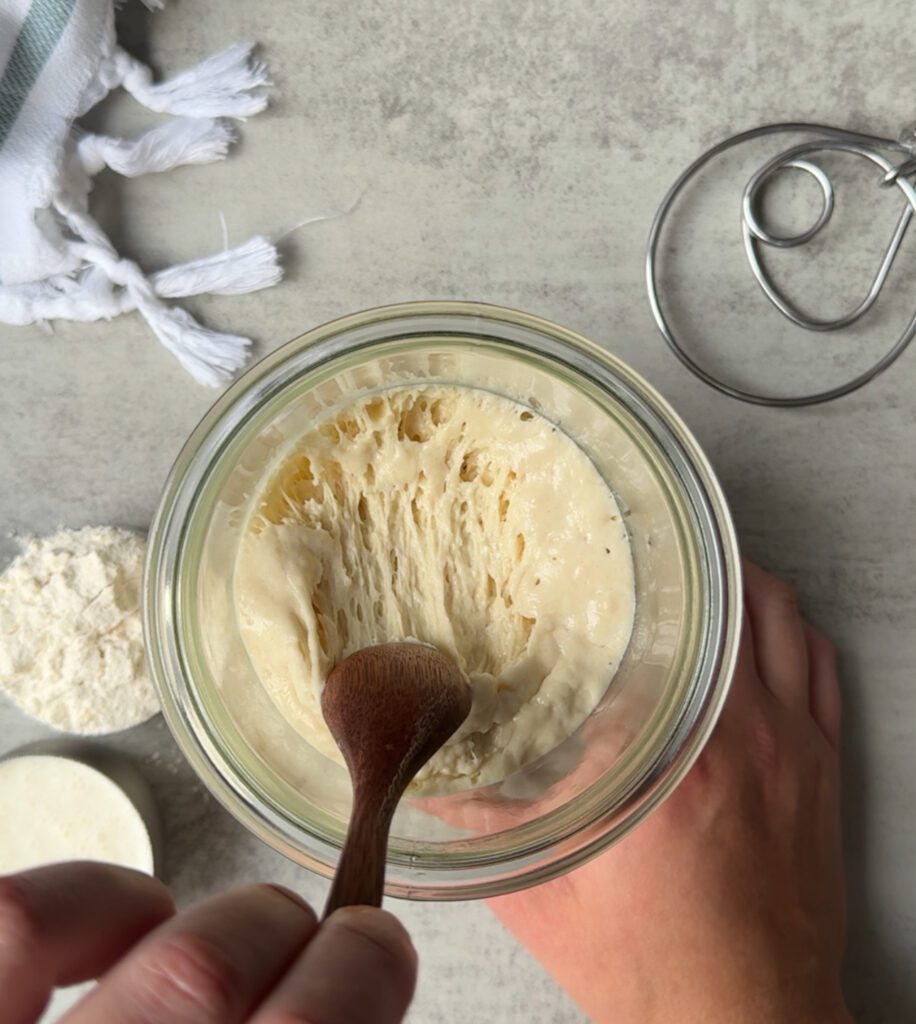
- What is a traditional Amish friendship starter?
- My spin on the Amish friendship sourdough starter
- Do I have to maintain an Amish friendship sourdough starter?
- How do I maintain an Amish friendship sourdough starter?
- What type of milk should I use?
- What type of flour should I use?
- How should I store my starter?
- How often should i feed it?
- My starter seems sluggish- what should I do?
- What do i do with the discard?
- I forgot my milk starter on the counter-will it go rancid?
- Why doesn’t milk spoil in a sourdough starter?
- Visual signs your starter is ready to use
- Texture, smell, and look when the starter is at peak
- What recipes should I use a milk starter in?
- Amish Friendship Bread Recipes
- How to make an Amish Friendship Sourdough starter
- Instructions
What is a traditional Amish friendship starter?
An Amish Friendship Bread starter is a fermented mixture that acts as the base for the bread, similar to a sourdough starter. It’s traditionally made with yeast, flour, sugar, and milk, which is left to ferment at room temperature over a few days. This fermentation process gives the bread its signature light, airy texture and mild sweetness.
The starter is often shared among friends, allowing others to continue the baking tradition. Some variations may also include yeast to help kickstart the fermentation process.
All of my Amish recipes are inspired by the classic friendship starter—this is my personal take on it however it is not the exact same method.
If you are interested in learning more about traditional Amish friendship starters and breads this is a great resource.
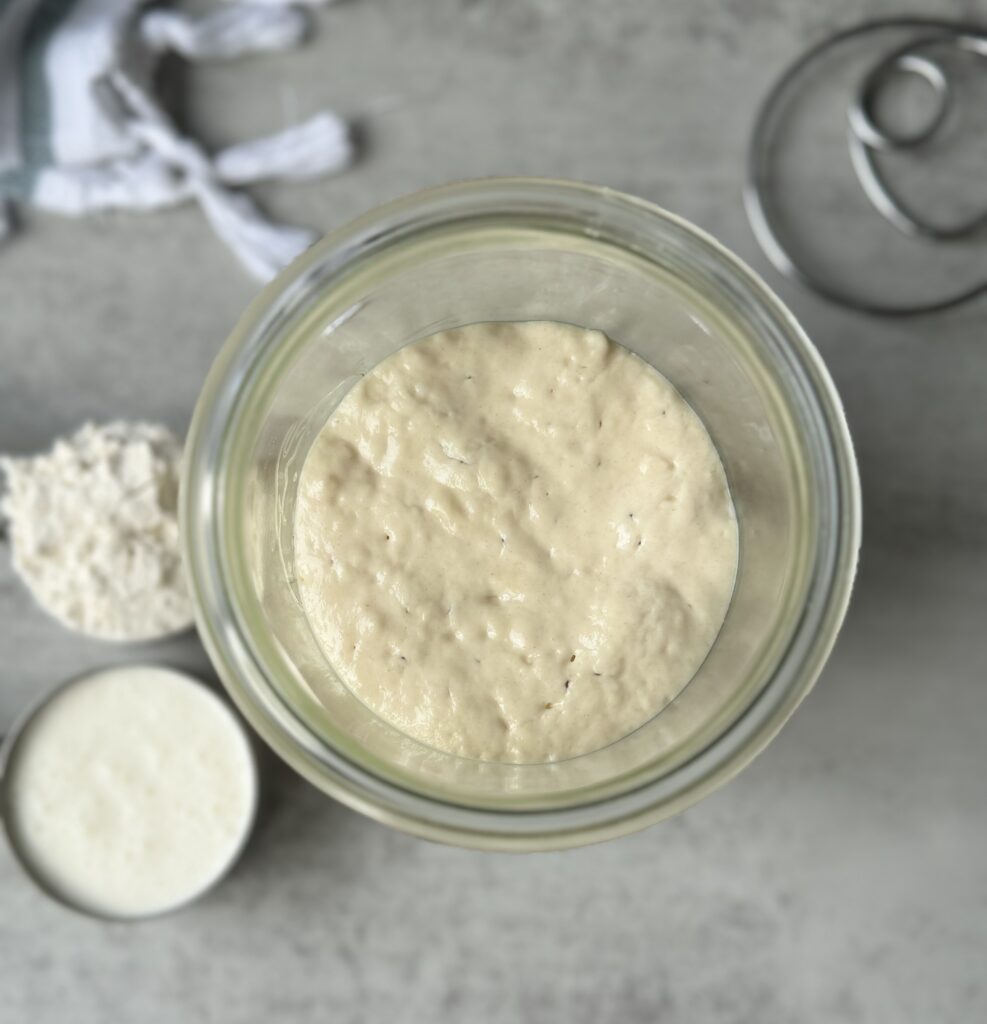
My spin on the Amish friendship sourdough starter
I created my own spin on the traditional Amish friendship starter by replacing the commercial yeast typically used with my active sourdough starter.
Fed with sugar, milk, and flour, this sweet sourdough starter blossomed beautifully, transforming my bakes into something extraordinary. The results were light, fluffy, and decadently rich dessert breads, proving that sourdough’s natural fermentation can elevate the classic Amish friendship bread into a uniquely flavorful and airy treat.
I understand there are many different ways you can create an Amish starter with a sourdough starter, this is how I personally do it and have enjoyed the results!
Do I have to maintain an Amish friendship sourdough starter?
The short answer is no. My recipes have instructions on how to create one with your sourdough starter and use it for a 1 time use.
However, if you’re interested in maintaining an Amish friendship sourdough starter keep reading.
How do I maintain an Amish friendship sourdough starter?
This type of starter can be maintained much like a traditional sourdough starter.
To make it simple I’ll give a sample feeding schedule:
Feed your Amish starter a 1:3:3 ratio (keeping the sugar the same amount as the starter). This means 1 part starter; 3 parts milk; and 3 parts flour.
Sample feeding: keep 20 grams of Amish starter, (discard the rest by placing it in an airtight jar & storing it in the fridge). Feed it with 20 grams of sugar, 60 grams of milk, and 60 grams of flour.
This is just a recommended feeding ratio, however feel free to use a ratio that works best for you.
What type of milk should I use?
While I use whole milk, any dairy based milk should work. I would not recommend using a non-dairy or plant-based milk.
What type of flour should I use?
All-purpose or bread flour is recommended for maintaining a hearty Amish starter.
How should I store my starter?
I recommend keeping the starter in the refrigerator when not using. It should be kept at room temperature during feedings. It can remain on the counter safely for up to 48 hours, but may vary depending on the temperature.
Refrigeration: It can last for 5-7 days in the fridge before needing a refresh.
How often should i feed it?
An Amish friendship sourdough starter will need to be refreshed every few days. For optimal results, it should be fed every 24 hours.
My starter seems sluggish- what should I do?
Much like a traditional sourdough starter, the milk starter will thrive in a warm environment (75 degrees F). Try placing it in a warm spot like your oven with the light on if it seems like it is not rising.
What do i do with the discard?
Milk starter discard can be used in any traditional sourdough discard recipe. It does well in cookies, muffins, pancakes, waffles, and cakes.
I forgot my milk starter on the counter-will it go rancid?
Yes. A milk starter needs to be refrigerated after 48 hours of sitting on the counter. If it sits out longer than this it is at risk of going bad. If it smells rancid or has any signs of mold, it will need to be discarded and the process restarted.
Why doesn’t milk spoil in a sourdough starter?
Milk in a sourdough starter doesn’t spoil in the typical way because of the acidic environment created by fermentation. Here’s why:
- Lactic Acid Bacteria (LAB) – The same bacteria that thrive in sourdough fermentation (such as Lactobacillus species) are also present in yogurt, kefir, and other fermented dairy products. These bacteria produce lactic acid, which lowers the pH and inhibits the growth of harmful bacteria that cause milk to spoil.
- Acidity (Low pH) – As the starter ferments, it becomes increasingly acidic. Spoilage bacteria and many pathogens struggle to survive in a low-pH environment.
- Competition from Yeasts and LAB – The beneficial microorganisms in a well-maintained starter outcompete undesirable microbes, preventing spoilage.
- Preservative Effect of Sugar – The sugar (like in a sweet stiff starter), can help preserve the milk by feeding the microbes that produce protective acids.
- Fermentation Timeframe – If refreshed regularly, the milk in the starter is constantly being converted into acids and other metabolites, preventing it from sitting long enough to rot.
This is similar to how milk is preserved in naturally fermented dairy products like buttermilk, kefir, or yogurt. However, if a milk-based sourdough starter is neglected for too long or stored improperly (e.g., at warm temperatures without regular feedings), it can eventually spoil.
Visual signs your starter is ready to use
This type of sourdough starter operates much like a regular sourdough starter. It takes about 8-12 hours to peak depending on the temperature in your home. When it has reached its peak here are some visual signs to look for:
- Bubbles: You should see bubbles throughout the starter both on top and throughout.
- Double in size: The starter should be doubled or even tripled in size when it is at its peak.
- Domed or slightly flat surface: At its peak, the starter’s top will look domed and puffed up. If it’s slightly flattened or starting to fall, it’s still usable but nearing the end of its peak.
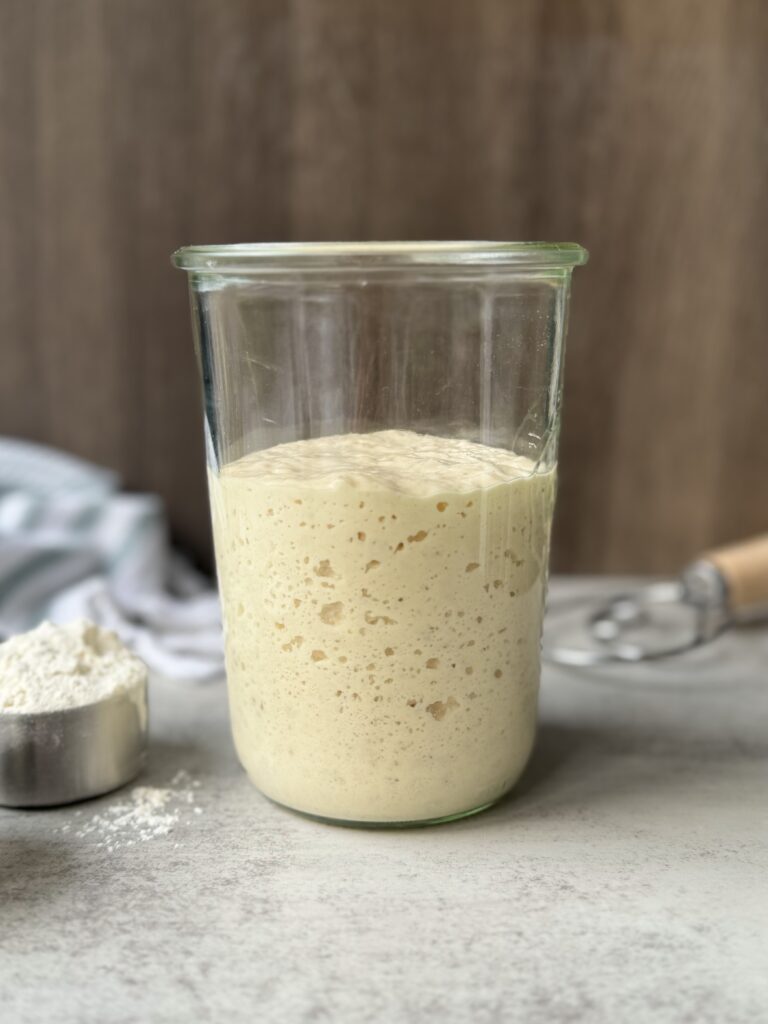
Texture, smell, and look when the starter is at peak
- Sponge-like texture: If you stir or press the starter, it should feel light and spongy, with noticeable gas pockets.
- Creamy color: The starter should look creamy and smooth with no discoloration (like gray, green, or pink spots, which indicate spoilage).
- Aroma: It should have a pleasantly sweet, tangy, and yeasty smell with a hint of milkiness. If it smells rancid or off, it may have spoiled.
- Elasticity: When stirred, the starter should have a stretchy consistency due to the gluten developed during fermentation.
A milk-based starter, like a sweet Amish friendship sourdough starter, typically holds its peak for 2–4 hours at room temperature. Several factors influence this timing:
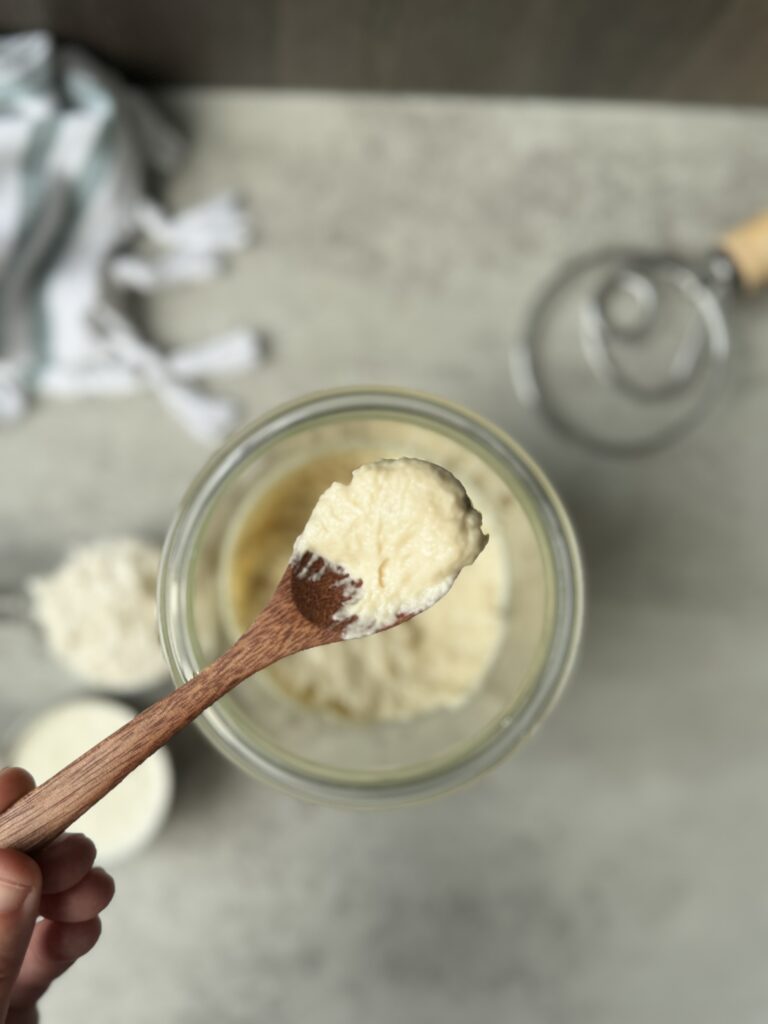
Ambient Temperature:
- In warmer environments (75–80°F / 24–27°C), the starter ferments quickly, peaking and falling within about 2 hours.
- In cooler temperatures (65–70°F / 18–21°C), it stays peaked for closer to 4 hours.
Activity Level:
- A well-fed, active starter maintains its peak longer.
- A weaker starter falls sooner due to a lower yeast and bacteria population.
Milk and Sugar Content:
- The added sugar and milk feed the yeast and extend the peak slightly compared to water-based starters.
How to Recognize the Starter Leaving Peak:
- The surface begins to flatten.
- Bubbles decrease.
- The starter shrinks slightly from the sides of the container.
What to Do:
If you can’t bake immediately, move the starter to the fridge at its peak to slow fermentation and preserve activity. This method keeps it strong and ready for use later.
For the best baking results, use the starter at peak or just as it begins to fall!
Visual of a milk starter rising & deflating
What recipes should I use a milk starter in?
This type of sourdough starter does well in sweet recipes, dessert breads, cookies, cakes, brioche, cinnamon rolls, etc.
Keep in mind if you are using it in a recipe that calls for a 100% hydrated sourdough starter (meaning its fed equal parts water & flour) you may need to make small adjustments to the recipe.
This starter is thicker in texture so it is recommended to start by decreasing the flour in a recipe by 30-40 grams. And add more as necessary.
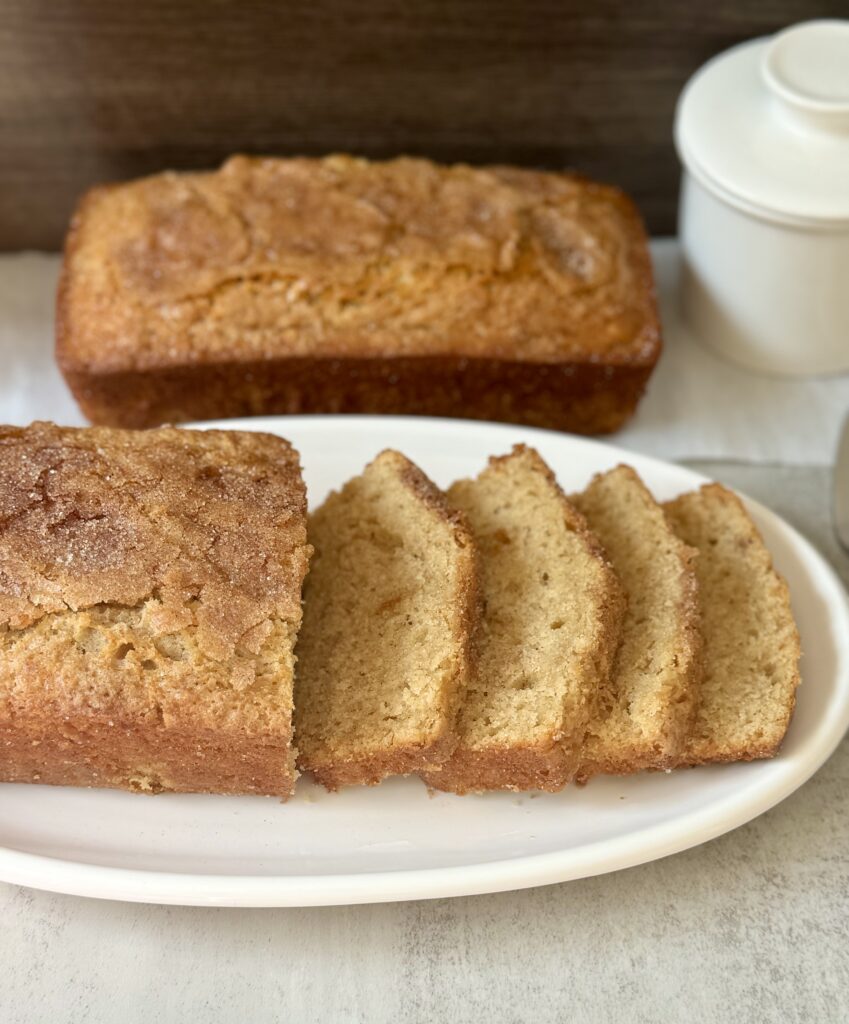
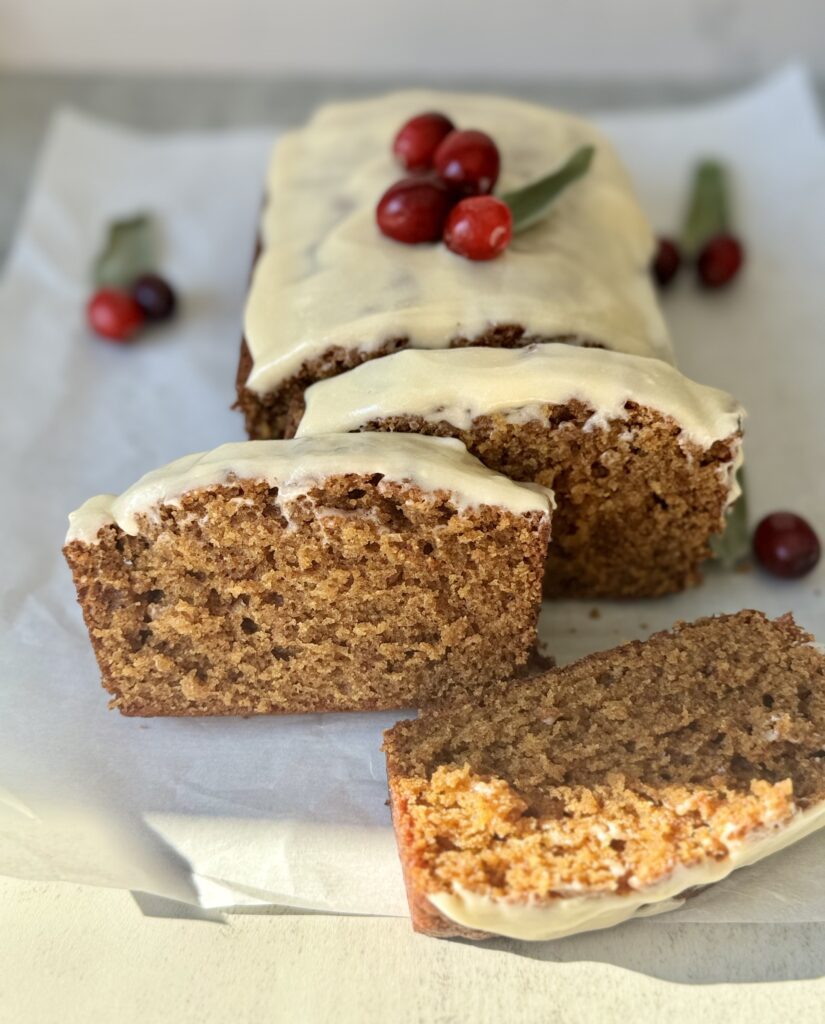
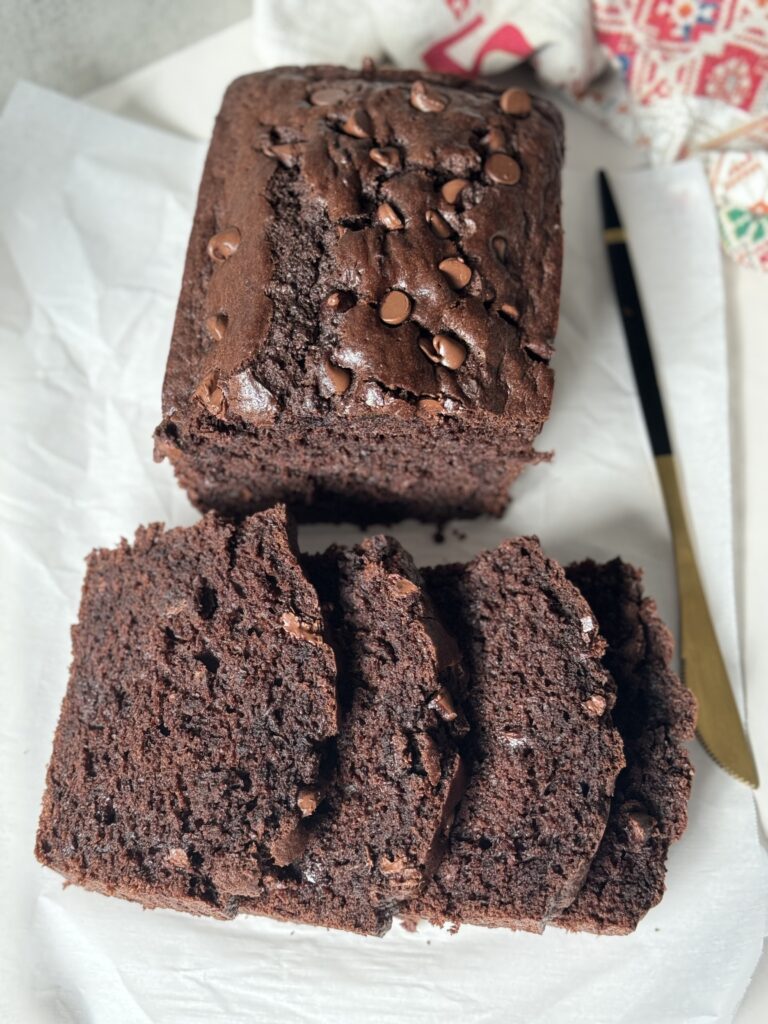
Amish Friendship Bread Recipes
- Amish Friendship Bread
- Gingerbread Amish Friendship Bread
- Double Chocolate Amish Bread
- White Chocolate Raspberry Amish Friendship Bread
- Amish Apple Cider Donut Bread
How to make an Amish Friendship Sourdough starter
Baker’s schedule: mix all ingredients and the Amish friendship sourdough starter should be ready to use in 8-12 hours depending on how warm it is.
Ingredients
**Makes 200 grams**
- 20 grams active sourdough starter (fed within the past 24 hours)
- 20 grams sugar
- 100 grams milk (I use whole but any dairy based milk will do)
- 100 grams all-purpose flour (bread flour works too)
Equipment
- Glass jar with a wide opening (mason jar or Weck jar)
- Small silicone spatula or fork for stirring
- Food scale
Instructions
- To a clean jar add 20 grams sourdough starter and 20 grams of sugar. Then add slightly warmed or room temperature milk (100 grams & 68-75 degrees F) and stir until most of the starter and sugar is dissolved.
- Lastly, add the flour and stir until there are no more dry flour clumps.
- Cover the jar loosely and let it rest at room temperature (68-70 degrees F) for 30 minutes.
- Return to the starter and give it one more good mix (this is for optimal gluten development), cover it loosely and let it rest at room temp for 8-12 hours or until doubled in size.
- Once the starter has doubled it is ready to use!

If you liked this article you may also like Sweet Stiff Sourdough Starter.
Amish Friendship Sourdough Starter (milk starter)
Equipment
- Glass jar with loose lid
- Small silicone spatula or fork for stirring
- Food scale
Ingredients
- 20 grams active sourdough starter
- 20 grams sugar
- 100 grams milk I use whole milk
- 100 grams all-purpose flour bread flour works too
Instructions
- To a clean jar add 20 grams sourdough starter and 20 grams of sugar. Add slightly warmed or room temperature milk (100 grams at 68-75 degrees F) and stir until most of the starter and sugar is dissolved.
- Lastly, add the flour (100 grams) and stir until there are no more dry flour clumps.
- Cover the jar loosely and let it rest at room temperature (68-70 degrees F) for 30 minutes.
- Return to the starter and give it one more good mix (for optimal gluten development), cover it loosely, and let it rest at room temp for 8-12 hours or until doubled in size.
- Once the starter has doubled in size it is ready to use!
Notes
Visual signs your starter is ready to use:
-
- Bubbles: You should see bubbles throughout the starter both on top and throughout.
-
- Double in size: The starter should be doubled or even tripled in size when it is at its peak.
-
- Domed or slightly flat surface: At its peak, the starter’s top will look domed and puffed up. If it’s slightly flattened or starting to fall, it’s still usable but nearing the end of its peak.
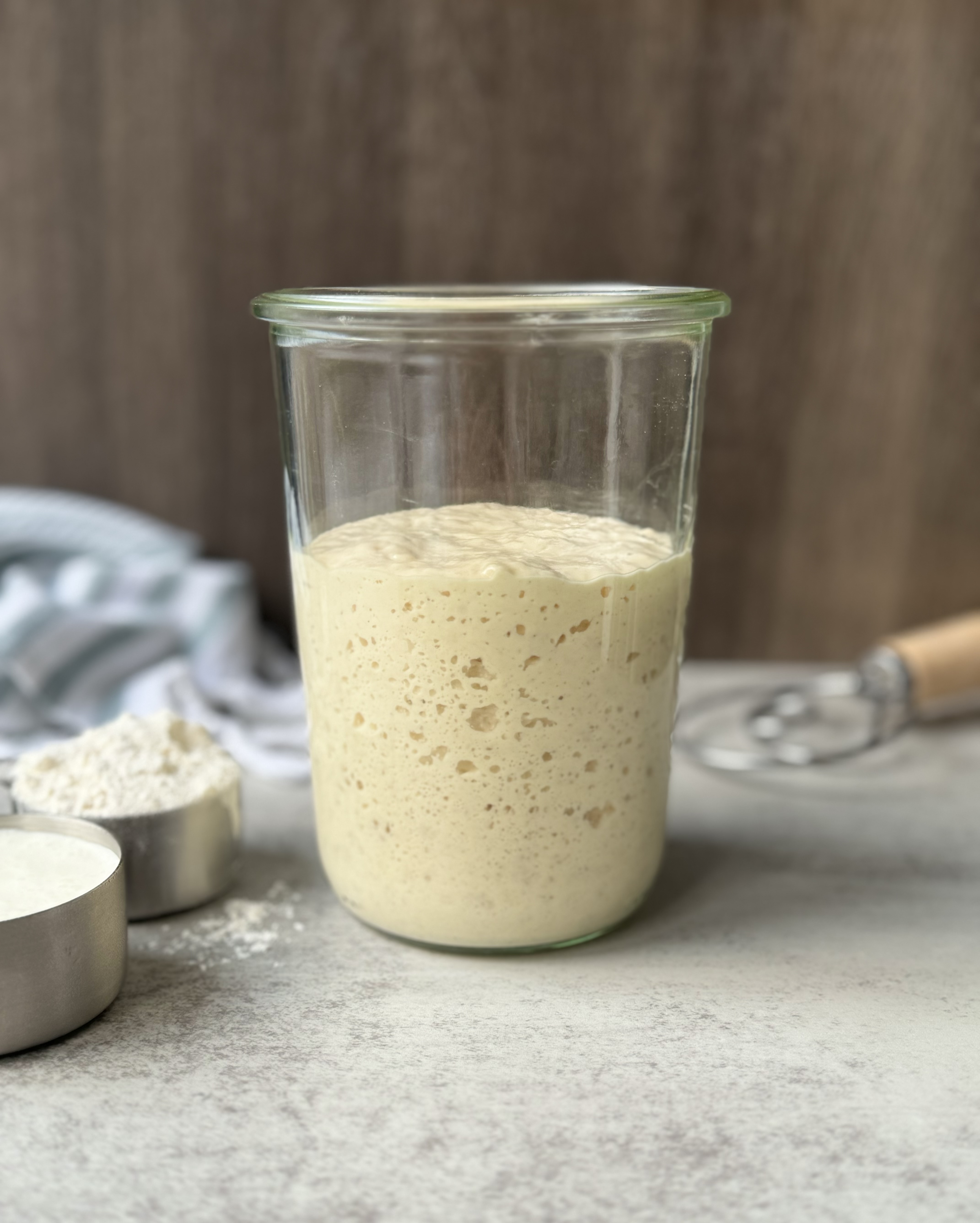
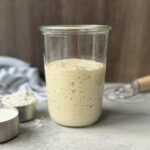
Leave a Comment & Rate the Recipe